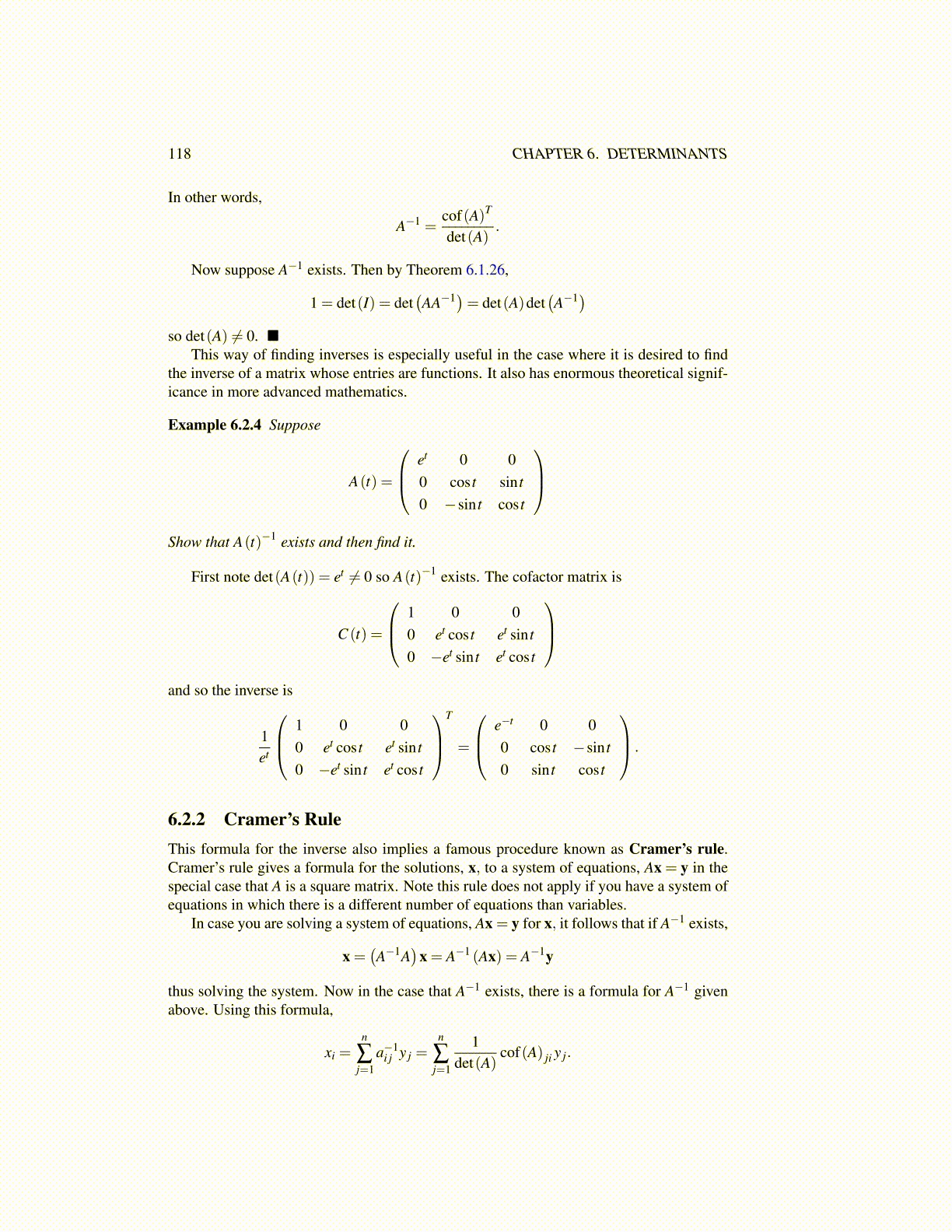
118 CHAPTER 6. DETERMINANTS
In other words,
A−1 =cof(A)T
det(A).
Now suppose A−1 exists. Then by Theorem 6.1.26,
1 = det(I) = det(AA−1)= det(A)det
(A−1)
so det(A) ̸= 0. ■This way of finding inverses is especially useful in the case where it is desired to find
the inverse of a matrix whose entries are functions. It also has enormous theoretical signif-icance in more advanced mathematics.
Example 6.2.4 Suppose
A(t) =
et 0 00 cos t sin t0 −sin t cos t
Show that A(t)−1 exists and then find it.
First note det(A(t)) = et ̸= 0 so A(t)−1 exists. The cofactor matrix is
C (t) =
1 0 00 et cos t et sin t0 −et sin t et cos t
and so the inverse is
1et
1 0 00 et cos t et sin t0 −et sin t et cos t
T
=
e−t 0 00 cos t −sin t0 sin t cos t
.
6.2.2 Cramer’s RuleThis formula for the inverse also implies a famous procedure known as Cramer’s rule.Cramer’s rule gives a formula for the solutions, x, to a system of equations, Ax = y in thespecial case that A is a square matrix. Note this rule does not apply if you have a system ofequations in which there is a different number of equations than variables.
In case you are solving a system of equations, Ax = y for x, it follows that if A−1 exists,
x =(A−1A
)x = A−1 (Ax) = A−1y
thus solving the system. Now in the case that A−1 exists, there is a formula for A−1 givenabove. Using this formula,
xi =n
∑j=1
a−1i j y j =
n
∑j=1
1det(A)
cof(A) ji y j.